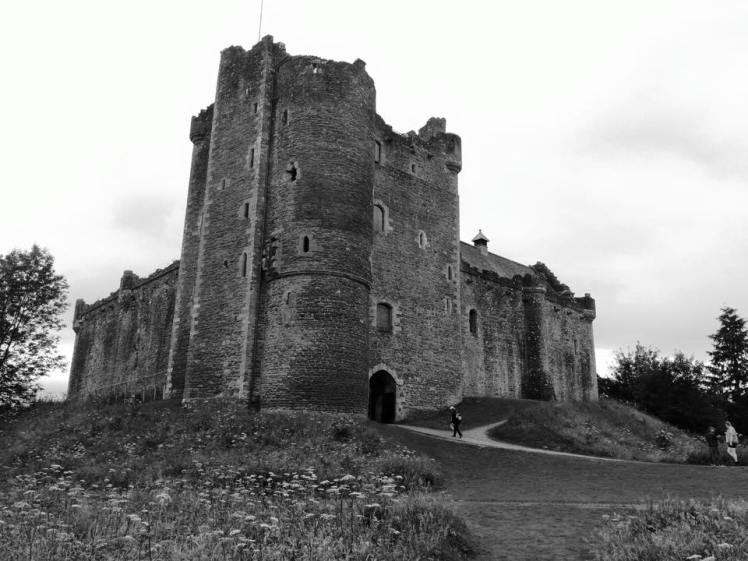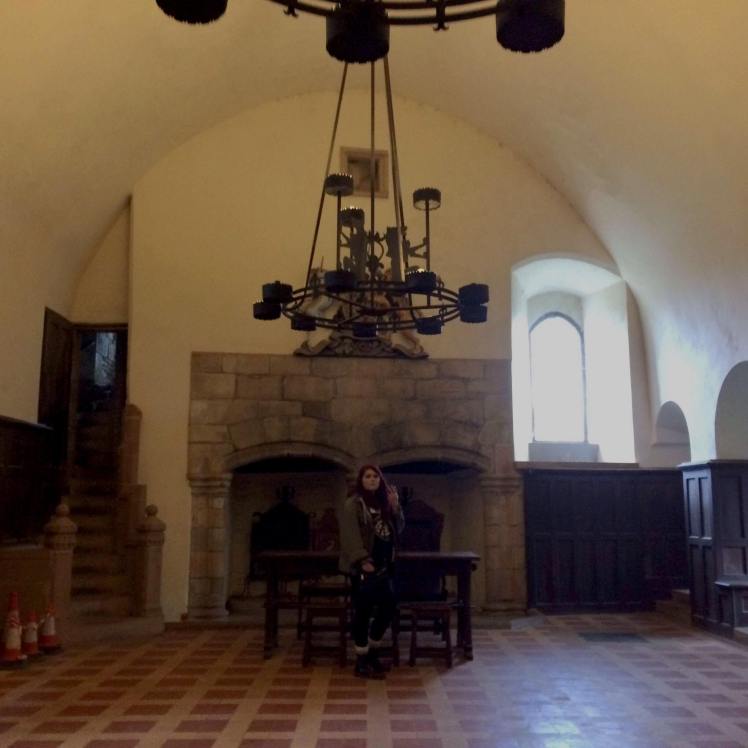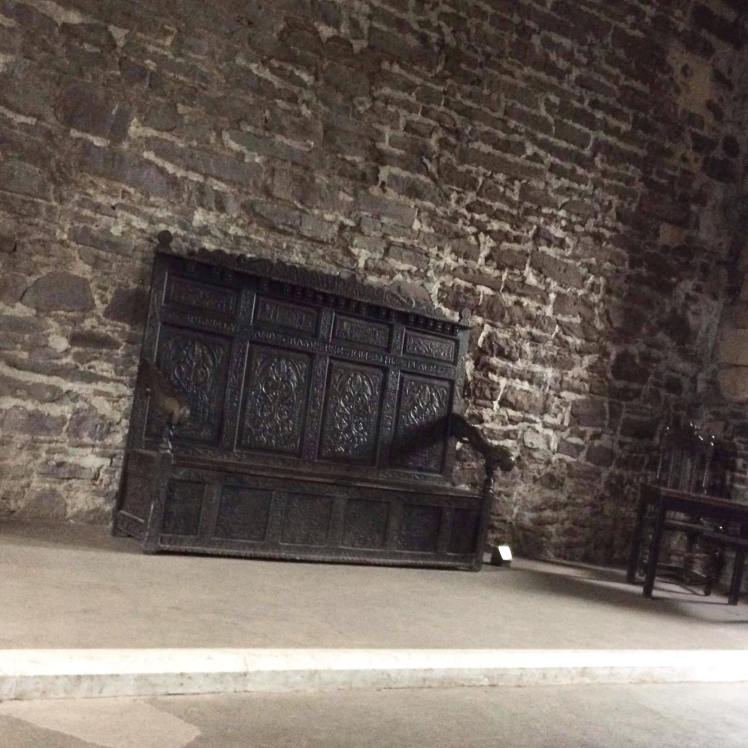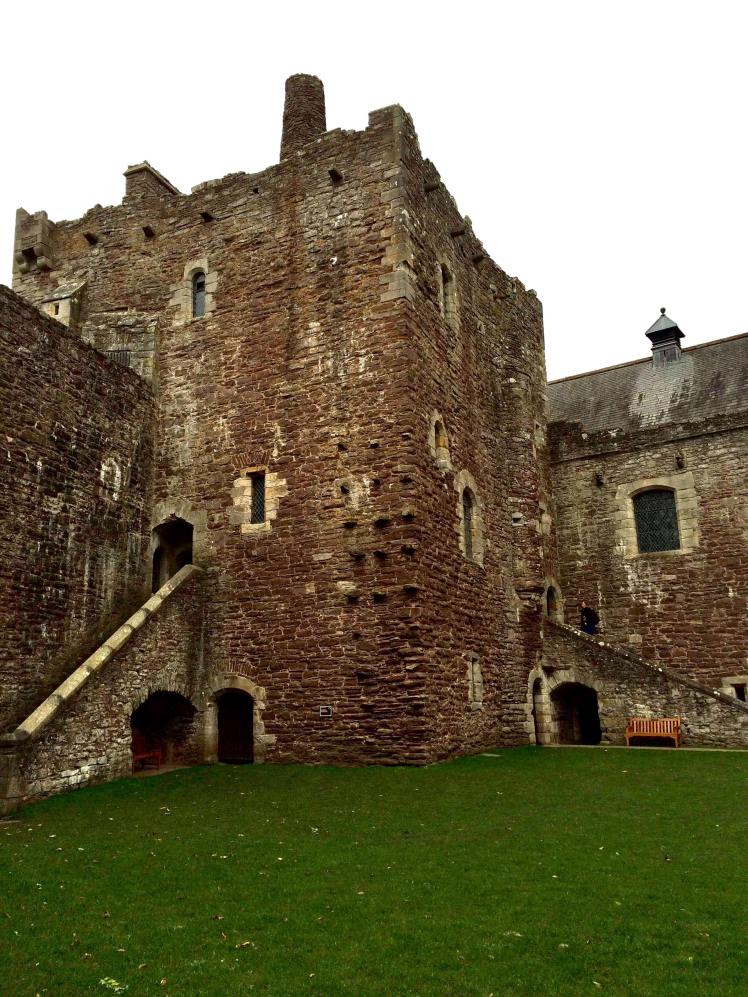Back in 2015 I toured around Scotland for 10 days on the excuse that it was essential to visit all the Scottish University Open Days. Now approaching my final year at The University of Nottingham, it is safe to say that my ‘essential’ excuse wasn’t so necessary. However, I will never look back and think that my time was wasted because since then I have fallen in love with the country’s staggering scenery, its natural grace, its unique charm and its centuries of fascinating and diverse history.
Now in conjunction with my love of travel, I have been back to Scotland a couple of times and with that a repeated exploration of Doune Castle has ensued. I have been in both the Autumn and Summer seasons and I can wholeheartedly say visit in the Autumn. Without the bustling and swarms of thousand of tourists you can experience this castle, the rest of Scotland’s sites and landscapes, in quiet. A quietness that naturally belongs to the countryside. A quietness that enhances the majesty of its environment and adds to the powerful presence of its ancient history. I often felt during this season that I was exploring side-by-side with the ghosts of Scotland – that the essence of the owner of Doune Castle, Robert Stewart, and the rest of its inhabitants were there with me, enriching my experience and knowledge of the castle. This was sadly lost when I visited in the Summer season as the chatter and cries of its tourists overclouded what was naturally there.

The History of Doune Castle
When I go travelling, especially when I visit castles, which is a lot, I make a point of finding out about the history and origin of the place. This feeds the nerdy part of me that hungers for knowledge of the past. If it was possible I would time travel back and experience the past for myself. However, since this isn’t an option I love to write about and share my passion for history with anyone who will listen to me.

So this brings me back to the history of Doune Castle. It is not clear who this castle was originally built for but it is most famously associated with Robert Stewart, the first Duke of Albany, Earl of Menteith and Fife in the late 1300s. However, the importance of the location has been recognised in earlier times. It is recorded that the Romans found this position beneficial, judging by the timber and earth fort to the north of the castle. This can be seen in an area between the castle and the present village of Doune. Despite the Roman forts’ good condition, historians are unclear as to whether it was any kind of fortification. The place-name ‘Doune’ suggests that this was the case as the word derives from ‘dun’ or ‘doon’, meaning ‘an ancient stronghold’.
Additionally, the castle’s importance was further established before Albany’s time from the suggestion that it may have been a main seat or administrative centre for the earldom of Menteith. From the 10th century, Scotland was divided into territories which formed earldoms who were considered second only to the king in authority. Furthermore, there is sufficient evidence to suggest that the land marking Doune served as the Menteith earldom’s main seat, as did the island castle, Inchtalla, located on the Lake of Menteith.
The Rise of Albany
As the younger brother of Robert III, an inadequate ruler of Scotland, the Duke of Albany was a key political figure and prominent member of the royal house of Stewart during this period. As a result of his brother’s ineffectiveness, the Duke of Albany became ruler of Scotland in all but name from 1388 until the time of his death in 1420, becoming known to history as the ‘uncrowned king’. Thus, his home Doune Castle essentially became a royal stronghold. Its strategically strong position on a promontory formed by the meeting of the Ardoch Burn and the River Teith in conjunction with its imposing presence visually depicts the Duke’s power, wealth and intelligence as the river was considered an important source of income and the forests essential for hunting game.

Robert Stewart was born in 1340 to Robert II and his first wife Elizabeth Mure of Rowallan. As the son of the King, Robert was positioned perfectly to gain power and did so through his marriage to Margaret Graham in 1361. Additionally, his royal descent combined with his clever and shrewd manoeuvring helped him to gain the earldom of Fife in 1372 and constableship of Stirling Castle a year later. His status later gained him the position of chamberlain, the chief financial officer of the kingdom in 1382.
Furthermore, Robert became guardian of Scotland by exploiting the weakness of his father Robert II and his elder brother John, Earl of Carrick. In 1384, John successfully led a coup to remove Robert II from power but in 1388 he lost support following his injury from a horse-kick and from the death of his powerful ally James Douglas, 2nd Earl of Douglas and Mar at the Battle of Otterburn. Robert was supposed to only rule Scotland until his brother John (who became Robert III) recovered his health or when his son David became of age. However, Albany’s tenure continued into his brother’s reign even once he had regained his strength.
In conjunction with this Robert Stuart was named the Duke of Albany in 1398 – a title that reflects his continued power and perhaps even his ambition to become king. The name ‘Albany’ derives from ‘Alba’ which is now used to mean the whole of Scotland but in Robert’s time it was significant in referring to the ancient heart of the kingdom north of the Forth and south of Moray.
Once Albany died in 1420, Doune Castle passed onto his son, Murdoch. Unfortunately, he was not as politically adept as his father and so the castle fell possession to the Crown under James I. It was also occupied by government troops during the 1689 and 1715 Jacobite uprisings and then later garrisoned by the Jacobite’s themselves in the 1745 uprising.
The interior of Doune Castle has a lot to offer its visitors and includes:
- The Gatehouse Tower – Entrance Passage

This imposing tower is the main entrance into the castle and housed the principle apartments of the Duke and Duchess of Albany, indicated by the large windows above the arch.
Additionally, the entrance served as the castles main defence and consisted of large wooden doors, a timber draw-bar and above it, the narrow slits which are known as murder holes. These allowed defenders to drop projectiles on intruders. These layers of defence symbolised the strength of Albany’s defences and emphasised to visitors that they were entering the private space of a very powerful individual.
2. The Gatehouse Tower – The Duke’s Hall and Chambers

Historians believe that this was the Duke’s Hall because of its grand architecture and the close proximity to the Great Hall. It is thought that this then became a private dining space and a place for the Duke to conduct business.
The stairs lead firstly to the Duke’s study and then up to a similar chamber which is thought to have been a place for those waiting to enter the grand hall – the Duke’s bedchamber.
To the east of this there is a small oratory or chapel containing a triangular headed credence for storing consecrated vessels, and an octagonal piscina for washing them. The location of this chapel suggests that it was private and only accessed by the Duke and his intimates.
Continuing up the stairs leads to the battlements which allows you to appreciate the stunning views across Doune’s landscape. The ability to see and be seen was an important aspect of a medieval castle as it meant that its strength of defences was that much greater.
3. The Courtyard and Cellars

The appearance of the courtyard would have been a different sight to the medieval visitor as the wide, open space we encounter would have been cramped as the now lost buildings along the north and west range would have been used by the servants, making the courtyard a hive of activity. Additionally, it would have been full of dirt and cobbles meaning that it would have been less pleasant to walk through.
To the left as you enter you can see the remains of the stone buildings along the courtyard’s east range. Whilst on the south range we can see windows that would have been accommodation for the nobles.
Off the courtyard on the north range (by the stairs in this picture) are three cellars used for storing food and drink – all of which led upstairs to the Great Hall. The stairs here lead to the dais end of the hall which is where the Duke would have sat to eat his meals.

4. The Great Hall
The Great Hall is the largest room in the castle and it would have been where the majority of those housed at Doune would have eaten and where some of the servants would have slept.
5. The Kitchen Tower

Within this tower lies the kitchen and it is the main room we have left that gives us insight into what life was like for a servant here. This is partially indicated by the knives and tool marks left in the stonework.
The first room you encounter at the top of the stairs is the servery. This would have acted as a passage through which the food was passed between the kitchen and the Great Hall. To the right of the servery is the kitchen – on one side of the room is a large, low-arched fireplace whilst on the right is a large window.
On the second floor of this tower is Mary Queen of Scots’ Bedchamber – on one end of the chamber is a small latrine closet and on the other is a sleeping closet.

If this rich history hasn’t grabbed your attention then perhaps what I have to say next might. Over the years, Doune Castle has been used countless of times for various films and TV programmes including Monty Python and Outlander.
I can’t stress how amazing this castle was! Every time I have visited Scotland I have been back here! It has so much to offer history nerds, film and TV nerds and the naturally curious!
Thanks for reading 🙂
X

